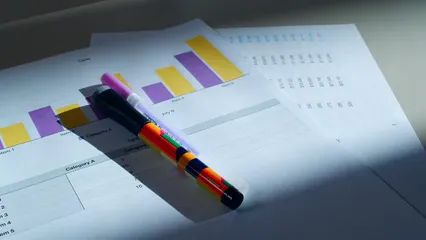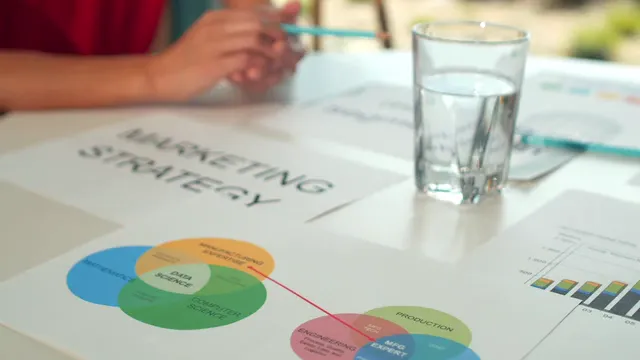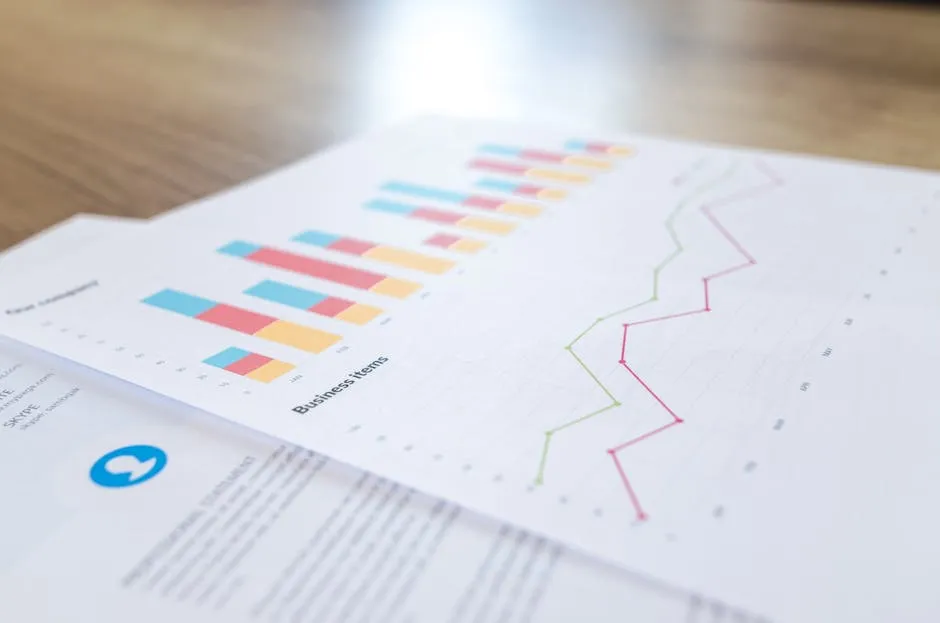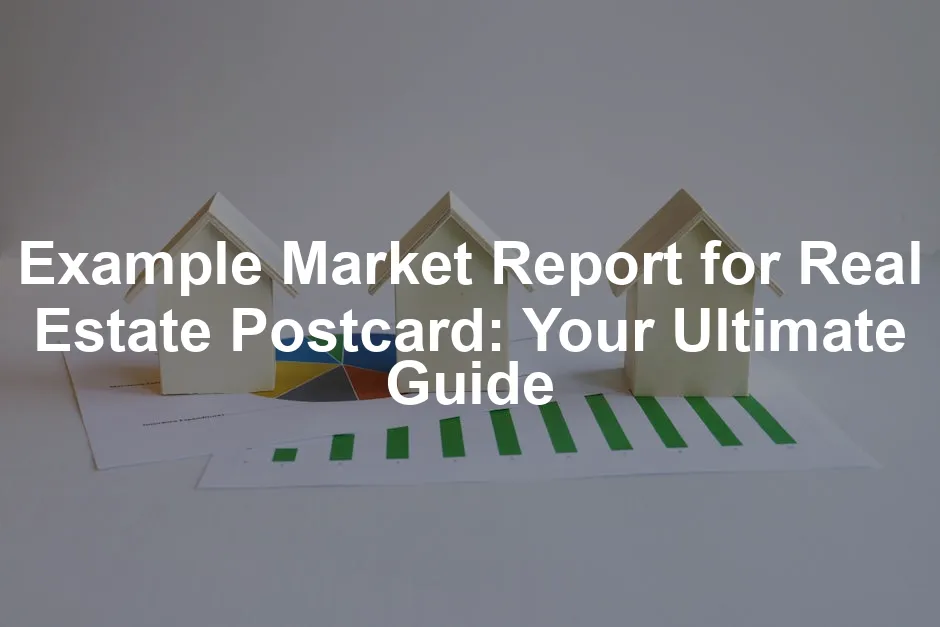Introduction
In a world dominated by digital marketing, the humble postcard might seem like a relic of the past. However, for real estate agents, postcards—especially those featuring insightful market reports—can be a game-changer. Picture this: your potential clients flipping through their mail, and there it is! A beautifully designed postcard that not only showcases your expertise but also provides valuable information about their neighborhood’s real estate trends.
These postcards can spark curiosity and provide insights that make clients feel informed. They can see their property values, neighborhood sales trends, and comparison data with just a glance. This guide will explore how you can create compelling market report postcards that grab attention and convert leads into clients.
Imagine you’re a homeowner. You receive a postcard showcasing recent sales in your area. You glance at the average home prices and think, “Wow, my house might be worth more than I thought!” Suddenly, you’re considering contacting that friendly agent who sent you the postcard.
Buckle up as we dive into the art and science of real estate marketing postcards! With the right approach, your postcards can become powerful tools in your marketing arsenal. They can turn casual readers into curious clients, eager to learn more about their property and the market. Let’s transform that outdated postcard into your best conversation starter!

Summary
This article will dissect the essential components of an effective market report postcard for real estate agents. We’ll explore what a real estate market report is, why it’s crucial for your marketing strategy, and how to effectively incorporate it into your postcards. Key points include:
- Understanding Market Reports: We will clarify what constitutes a real estate market report, highlighting the metrics that matter most, such as average home prices, days on market, and inventory levels.
- The Importance of Market Reports: Discover how including market data establishes your credibility and positions you as a local expert, making your postcards more than just another piece of junk mail.
- Crafting the Perfect Postcard: Learn the steps to select relevant data, simplify complex information, incorporate personal branding, and create a compelling call to action.
- Professional Services: We’ll discuss the benefits of using professional services for printing and mailing your postcards, ensuring a polished product that reflects your brand.
- Real-World Examples: The article will also showcase examples of market report postcards, providing inspiration for your own designs.
By the end of this guide, you’ll have a comprehensive understanding of how to craft an impactful market report postcard that not only informs but also engages your audience, driving results for your real estate business. These postcards can help you stand out and connect with clients in meaningful ways. Whether you’re targeting first-time buyers or seasoned sellers, this approach will resonate throughout your marketing efforts. The future of your real estate business starts with a great postcard!

What is a Real Estate Market Report?
A real estate market report is a vital tool for agents and homeowners alike. It summarizes local market conditions, helping stakeholders make informed decisions. Typically presented as a postcard or brochure, this report highlights key metrics and trends in the real estate landscape. Its primary purpose? To provide a snapshot of the current market, showcasing your expertise as a real estate professional.
Understanding market reports is crucial for both buyers and sellers. They reveal essential data points that indicate the health of the housing market. For instance, a report might highlight median home prices, sales volume, and the average days a property stays on the market. This information empowers clients to assess whether it’s a good time to buy or sell.
Key metrics in a market report include:
- Median Home Prices: This number indicates the midpoint of home values in a specific area. It helps clients understand pricing trends and affordability.
- Sales Volume: This figure reflects the total number of homes sold in a given timeframe. A high sales volume can signify a strong demand for properties.
- Days on Market: This metric shows how long homes typically stay on the market before selling. Shorter times suggest a competitive market, while longer durations may indicate a slower pace.
- Inventory Levels: This indicates how many homes are currently for sale. Low inventory often leads to higher prices, while high inventory can drive prices down.
- List-to-Sale Price Ratio: This ratio compares the original listing price to the final sale price. A higher ratio indicates that homes are selling close to their asking prices.
Visual representation of this data is essential for clarity. Graphs and charts can effectively illustrate trends over time. For example, a line graph could show the rise or fall of median home prices over several months. Additionally, pie charts can depict the distribution of sales volume across different property types or neighborhoods. Infographics are also a fun way to summarize complex data, making it digestible for clients.
Incorporating visuals adds flair to your market report and enhances understanding. Instead of overwhelming clients with numbers and jargon, graphs and charts simplify the information. A well-designed postcard showcasing these insights grabs attention and encourages recipients to engage further. After all, who wouldn’t be intrigued by a colorful chart indicating their home’s increasing value?
In conclusion, a real estate market report is more than just a collection of numbers. It’s an essential resource that informs clients and builds trust. With the right metrics and visual aids, your market report can be both informative and eye-catching, making it a powerful tool in your marketing arsenal.

Why Use Market Reports for Marketing Postcards?
Using market reports in marketing postcards is a savvy strategy for real estate agents. These reports do more than just inform; they build credibility and foster trust with potential clients. When you provide valuable market insights, you position yourself as the go-to expert in your area. Clients appreciate agents who can interpret the data and translate it into actionable advice.
First, showcasing your market knowledge establishes authority. Clients want to work with someone who understands local trends. By sharing specific metrics from market reports, you demonstrate that you’re in the know. This approach elevates your status from just another realtor to a trusted advisor.
Second, including valuable content in your postcards sets you apart from generic advertisements. Many postcards simply announce “Just Listed” or “Just Sold.” While these are important, they often lack depth. Data-driven insights make your communications more compelling. Clients appreciate receiving actual numbers that impact their investment decisions. Providing context, like how the average home price has changed over the last year, can spark interest and discussions.

Additionally, market reports can serve as conversation starters. When clients receive well-crafted postcards filled with useful data, they’re likely to discuss it with friends or family. This word-of-mouth advertising is invaluable. It positions you as a knowledgeable resource in their circles, increasing your chances of referrals.
Furthermore, these postcards can be tailored to specific audiences. For example, luxury home buyers may respond better to high-end market statistics, while first-time buyers might seek information about entry-level homes. By customizing your message, you enhance relevance and connection with your audience.
In summary, utilizing market reports in your marketing postcards is a powerful strategy. It builds credibility, provides valuable content, and fosters engagement. By positioning yourself as an expert armed with useful data, you can differentiate your marketing efforts from the sea of generic real estate advertising. So, if you want to turn those postcards into lead-generating powerhouses, make sure to sprinkle in some market insights!

How to Use Market Reports for Real Estate Postcards
Creating effective real estate postcards using market reports can elevate your marketing strategy. These postcards become not just informative pieces but also engaging tools that connect you with potential clients. Here’s how to maximize their impact.
Selecting Relevant Data
Choosing the right data is crucial. Consider your target audience carefully. Tailoring your data selection to specific demographics can make a significant difference. For instance, luxury home buyers might be more interested in high-end market trends, while first-time buyers focus on entry-level statistics.
Understanding your audience’s needs ensures the information you present resonates with them. Highlight pertinent metrics such as average home prices, days on the market, and local inventory levels. These insights help potential clients grasp the market’s dynamics and make educated decisions.

When gathering local market data, rely on trusted sources. Here’s a list of reliable options for obtaining valuable insights:
- Local Multiple Listing Service (MLS): Provides comprehensive and up-to-date property listings.
- National Association of Realtors: Offers reports and statistics on national trends.
- Zillow and Redfin: Great for local market conditions and home value estimates.
- Realtor.com: Another solid resource for listings and market data.
- Department of Housing and Urban Development: Offers reports on housing trends and economic data.
Utilizing these resources allows you to craft market reports that are both informative and engaging. And while you’re at it, if you’re looking to expand your knowledge of real estate investing, consider checking out “Real Estate Investing for Dummies”. It’s a fantastic resource for anyone looking to get into the real estate market!

Simplifying Information
Once you have your data, it’s time to present it in a digestible format. Making complex information easy to grasp is essential for your audience. Use bullet points to highlight key takeaways and create infographics to visualize statistics. These techniques make the information more approachable and engaging.
Remember, clarity is key. Avoid overwhelming clients with dense paragraphs. Instead, break down the information into manageable sections with clear headings. This organization helps guide readers through the data, allowing them to absorb key insights quickly.
Design and layout significantly impact your postcard’s effectiveness. Ensure your visuals are appealing and easy to read. Use contrasting colors and legible fonts to enhance readability. Incorporating images or icons related to the data can also make the postcard more engaging.
An eye-catching design not only grabs attention but also reinforces the information you’re sharing. A well-structured postcard will encourage recipients to take a closer look, enhancing their understanding of the data presented.

Personal Branding
Personal branding matters in real estate marketing. Ensure consistency across all your marketing materials, including postcards. Use your logo, colors, and tagline consistently to strengthen your brand identity. This consistency helps clients recognize your brand easily.
Adding a personal touch can enhance the connection with your audience. Consider including a short message that reflects your personality. For example, you could say, “As your local expert, I’m here to help you navigate these market changes.” This approach humanizes your marketing and makes clients feel more connected to you.
Engaging with your audience on a personal level fosters trust and loyalty. When potential clients see your postcards, they recognize not just a professional but also a friendly resource ready to assist them. Incorporating personal branding elements effectively can turn your postcards into powerful tools for building lasting relationships in your market.

Calls to Action
A compelling call to action (CTA) is essential for your real estate market report postcards. It guides potential clients on what to do next. Here are some examples that can encourage recipients to reach out:
- “Curious about your home’s value? Contact me for a free market analysis!” This CTA invites homeowners to engage directly, promising valuable insights into their property’s worth.
- “Thinking of selling? Let’s discuss how the current market affects your home!” This approach not only piques interest but also implies that you’re knowledgeable about market trends.
- “Want to know how homes in your neighborhood are selling? Call me for the latest updates!” This CTA creates urgency by focusing on local trends and encourages immediate action.
- “Ready to make your next move? Schedule a consultation today!” This is a straightforward invitation, making it clear that you are available and eager to assist.
- “Get your personalized market report! Text ‘MARKET’ to [Your Number]!” A modern twist, this CTA utilizes technology to streamline contact and engagement.
By incorporating these engaging CTAs into your postcards, you create pathways for potential clients to connect, making your marketing efforts more effective. And speaking of effective marketing, if you’re looking to brush up on your sales techniques, check out “The Art of Closing the Sale” by Brian Tracy. It’s a must-read for anyone in sales!

Utilizing Professional Service Providers
When it comes to enhancing your real estate postcard marketing, utilizing professional services can significantly elevate your campaigns. Here’s how:
Benefits of Professional Services
Professional design and mailing services offer a polished look that self-designed postcards often lack. These services can save you time and ensure high-quality results. A professionally designed postcard not only captures attention but also reflects your brand’s dedication to excellence. Companies specializing in real estate marketing understand the nuances of effective designs, helping you stand out from competitors.
Additionally, mailing services streamline the distribution process, allowing you to focus on clients rather than logistics. They handle everything from printing to postage, ensuring timely delivery. Many of these providers also offer tracking options, so you can measure the impact of your campaigns.

Recommendations for Providers
Several reputable companies can take your postcard marketing to the next level. PostcardMania provides a variety of real estate postcard templates and marketing solutions tailored for agents. Their expertise in direct mail marketing can help you maximize your outreach while maintaining your brand identity.
Corefact is another excellent option, offering customizable postcard templates. They allow you to personalize designs, ensuring your marketing materials resonate with your audience. Plus, they provide data-driven insights to help you refine your strategy.
Lastly, consider ProspectsPLUS! This provider specializes in real estate marketing materials, including postcards. They offer user-friendly design tools and a vast library of templates to fit your needs.
By leveraging these professional services, you’ll produce eye-catching postcards that not only look great but also effectively convey your market expertise. And while you’re at it, if you’re interested in enhancing your graphic design skills, check out “Canva for Graphic Design Book”. It’s a fantastic guide for beginners!

Example Market Reports for Real Estate Postcards
Creating effective market report postcards requires a blend of compelling visuals and insightful data. Let’s look at how to structure these postcards and analyze what makes them successful.

Visual Examples
Using visually appealing designs is crucial. For instance, postcards that include colorful graphs showcasing market trends catch the eye. Platforms like Corefact provide templates that effectively highlight critical metrics, such as median home prices and sales volume. Another great resource is PostcardMania, which showcases various real estate postcard examples, emphasizing the importance of clarity and aesthetics.

Analysis of Successful Designs
Successful postcard designs share common traits. First, they prioritize readability. Use bold headings and legible fonts to make key information stand out. For instance, a postcard highlighting the average days on market should display that number prominently.
Second, incorporate data that resonates with the audience. Including local market insights, such as “Homes in your area sold 15% faster this quarter,” can spark interest. This type of information not only informs but also encourages dialogue.
Lastly, a strong call to action is vital. Each example should prompt recipients to contact you for more detailed insights or a personal consultation. And if you’re looking for more in-depth knowledge, consider reading “The Millionaire Real Estate Agent” by Gary Keller. It’s packed with insights for aspiring real estate professionals!
By combining these elements—striking visuals, relevant data, and effective CTAs—you can create market report postcards that engage your audience and position you as a trusted real estate expert.

Conclusion
Real estate market report postcards are more than just marketing materials; they serve as your key to becoming a trusted authority in your local market. These postcards not only share vital information but also showcase your expertise and understanding of local trends. By leveraging accurate data, you position yourself as the go-to resource for potential clients. This builds trust and encourages engagement, making recipients more likely to reach out to you with questions or for assistance.
To create effective postcards, focus on personal branding and professional design. A well-crafted postcard reflects your style and professionalism, while also engaging your audience. Remember, consistency is crucial. Regularly updating your postcards with the latest market data keeps your outreach relevant. It shows that you are actively monitoring changes and are ready to assist clients in navigating these shifts.
As you implement these strategies, be open to adapting your approach based on market trends. This adaptability will keep your marketing efforts fresh and effective. Incorporating current statistics, insights, and community trends will make your postcards not just informative but also a valuable resource for homeowners and potential buyers.
Ultimately, real estate market report postcards can be powerful tools in your marketing arsenal. With the right approach, they can convert casual readers into interested clients. So, roll up your sleeves, start crafting those postcards, and watch as you become the trusted real estate expert in your community!
FAQs
– What should I include in my market report? When creating a market report, essential metrics should include median home prices, sales volume, days on market, and inventory levels. Including visual aids like graphs can make this data more digestible and engaging for recipients.
– How often should I send out postcards? It’s advisable to send out postcards quarterly. This frequency keeps your audience informed about market changes without overwhelming them. Consistency in your mailings will reinforce your presence in their minds.
– Can I design my postcards myself? Yes, you can design your postcards yourself using tools like Canva. However, consider the pros and cons. DIY designs can save money, but professional services often lead to a more polished look and ensure high-quality printing. Balancing your budget and the desired outcome is key!
Please let us know what you think about our content by leaving a comment down below!
Thank you for reading till here 🙂
All images from Pexels




